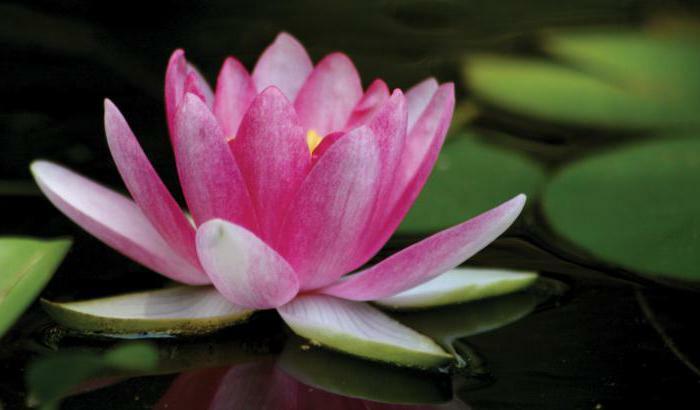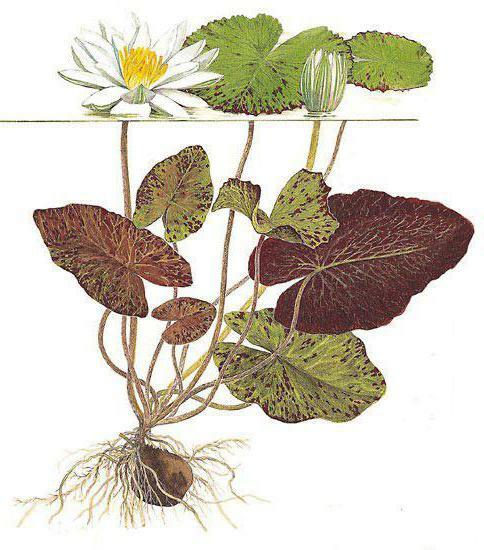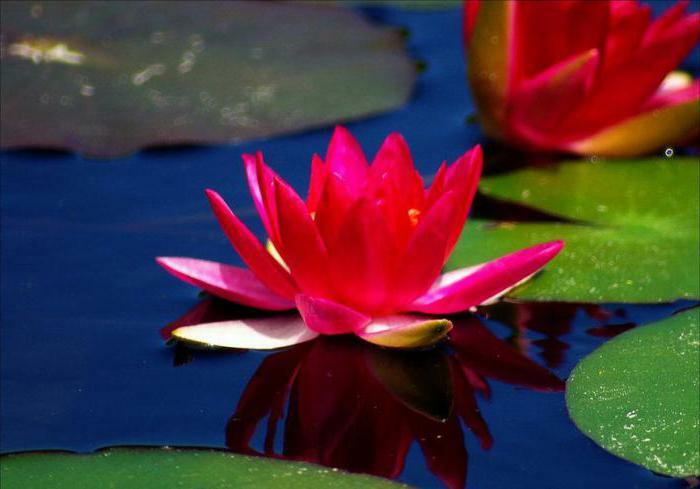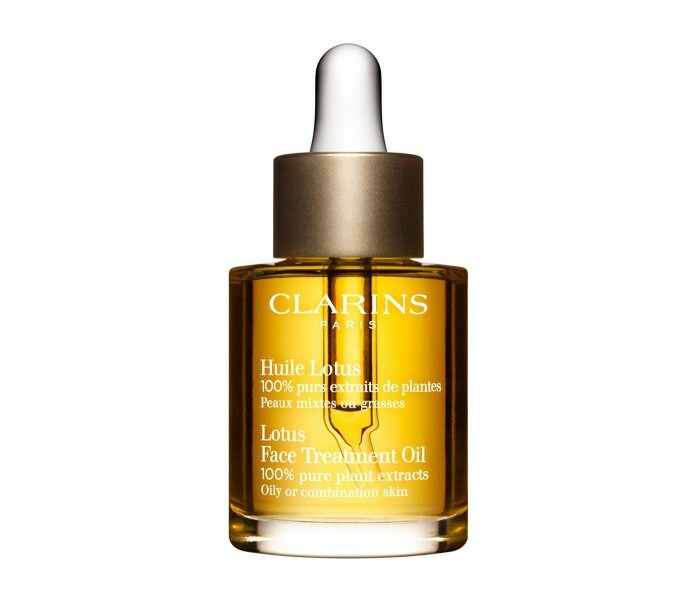Lotus oil essential: composition, useful properties, application
Since ancient times, people know tender and pure lotus flowers. Essential oil from this plant is widely used today for cosmetic purposes. Massage and aromatize the rooms with him.
We learn in more detail how the lotus grows, what its useful properties are, whether there are contra-indications in application, and how to use it.

Description
The plant has large leaves, beautiful flowers with yellow stamens and a very pleasant smell. Cultivate it artificially is an extremely difficult exercise. All work should be manual. After all, a tender lotus needs care and warmth.
Flowers
Fascinating flowers have a different, but always attractive color. Their diameter sometimes reaches thirty centimeters. In addition to the beautiful form, they have a surprisingly delicate aroma, thanks to which petals are often added to the composition of teas.
To obtain a healing effect, the collection should be performed before dawn. It is at this time that they smell the most. If you break the flower and damage the plant, its healing effect may be lost. Lotus oil is obtained from the petals of these incredibly trembling plants.

Leaves
These plant parts contain very valuable substances for humans, such as flavonoids, alkaloids and others. Together with other medicinal herbs they are used as a restorative, diuretic, antiseptic and hemostatic.
The main property of the leaves is to lower the level of lipids in the blood, to rejuvenate the body, to soothe and relieve spasms, swelling, and also to put the rhythm of the heart in order.
Seeds
Seeds are one of the most useful parts of the whole plant. In Chinese folk medicine, they find a variety of uses: they treat problems of the cardiovascular, central nervous system, struggle with insomnia and help to recover with the strongest psychological stress.
Using seeds in cooking, it is possible to strengthen immunity, intestines, kidneys, heart and organs of reproductive activity.
Root
In addition to pleasant taste, decoction of the roots is effective as a soothing, antipyretic and antiseptic. Gonorrhea, liver and kidney disease, spleen, dysentery and avitaminosis are just a small part of the list of diseases that are capable of treating the lotus( the photo below illustrates all parts of the plant).

In the Far East, they were treated for pneumonia and bronchial asthma, and the Japanese used the root to rescue bites from poisonous insects.
He was recognized even in official medicine and included in the composition of many drugs.
White, red, blue lotus
A white flower can be found in Mexico, Brazil and Guatemala. It is a water lily with a strong root and stems up to thirty centimeters long.
The red lotus, the photo of which you see below, is the emblem of modern India. It contains a huge variety of vitamins and nutrients. It has a rejuvenating effect and helps the metabolic processes, as well as the work of the liver and pancreas.

Blue lotus grows in India, Thailand and East Africa. Based on it, spirits were made from ancient times. In ancient Egypt, he was often used for various rituals.
It is interesting that in Russia this variety of flower is attributed to prohibited drugs classified as narcotic. Psychotropic effects on human consciousness have been proven. But in eastern medicine blue lotus is traditionally added to dry red wine and makes on its basis therapeutic teas.
There are other species of this flower, for example, walnut, American yellow or five-petalled.
Lotus oil
Oil is obtained from all three petals of a beautiful plant. They differ not only in color, but also in smell. The lotus essential oil may seem the same at first. But each of the flowers is produced in different places of the Earth and has different notes of aromas.
Lotus oil for Hindus is sacred. They are sure that thanks to him the mind clears up, the heart opens unconditional love, and the person begins to thrive. It softens, soothes and moisturizes the skin, giving it firmness and rejuvenation.
Since ancient times, lotus oil has been used in folk medicine. For treatment, couples with a flower fragrance were often used. They were relieved of pain and cramps, treated with hemorrhoids and diarrhea, restored cardiac activity, relieved stress and depressive conditions.
Useful properties and contraindications
Useful properties are manifested depending on the constituent substances of the plant. White, red and blue lotus have different properties. Orehonosny species can be eaten, but in Russia it is listed in the Red Book and it is not so easy to get it. But residents in many Asian countries, Australia and New Guinea do not imagine a daily diet without lotus.
When choosing a remedy for treatment, it is necessary to be interested in the place of growing the flower. Egyptian oil is considered one of the highest quality of all. Feels floral and a little exotic flavor. The oil is clear, with a light yellow tinge.

Official science has not studied what contraindications a plant can have. As a general rule, it is forbidden to take it for pregnant women and mothers during lactation. It is undesirable for children. Lotus can cause an allergic reaction. Therefore, the oil should be used only in diluted form. Try to avoid getting it on the mucous membranes. Before using, consult a specialist.
Application of
Often a lotus is called a sacred plant. It represents a natural purity. Despite the fact that the roots are in the mud, the flowers are located above the water, tender and clean. Inhaling healing aromas, a person as if defending himself from dirty vanity and gaining inner independence. In addition to the floral scent, notes of spicy herbs and even a honey tint have lotus oil.
Application, of course, should not be carried out in a concentrated form. It is diluted in water or used with other oils, such as sandalwood, neroli, cinnamon.
The aroma of this wonderful flower shows itself not immediately. At first, a slightly watery and earthy smell will appear, changing to an unusually subtle fragrance. So you can easily distinguish the original from fakes.
To achieve serenity of spirit, the oil is added to the aroma lamp. Inhalation of the fragrance, however, can be not only for meditation, but also for the treatment of the respiratory tract, asthma, etc. The lungs open, and the body is completely relaxed. Breathing should be slow and deep. Concentration of attention occurs in a strengthened mode, and the mind is synchronized with the body.
In addition to its wide use in aromatherapy, it is often added to base oils for massage. The concentration should not exceed 2%.To take a bath in the emulsifier, add a few drops and mix in water. This procedure will give a wonderful relaxing effect.

Lotus face oil will also soothe the skin, remove irritation and itching. Most often it is used to care for oily and mixed skin type. It not only perfectly cleanses, but also moisturizes the skin, refreshes and restores tonus.
Usually lotus is mixed with lotions, creams and other skin care products. Thus, the effect of the effects of cosmetics is intensified. But the addition should be carried out immediately before application.
The stimulating action starts the process at the cellular level, prevents wrinkles and smoothes the skin.

If you have nervous overstrain, stress or especially depression, lotus oil will be beneficial in its properties and help to cope with severe conditions.
In addition to using oil, tea is often drunk, made from petals and stamens of a plant. It must be done with observance of all the rules, so that the useful properties are preserved.
